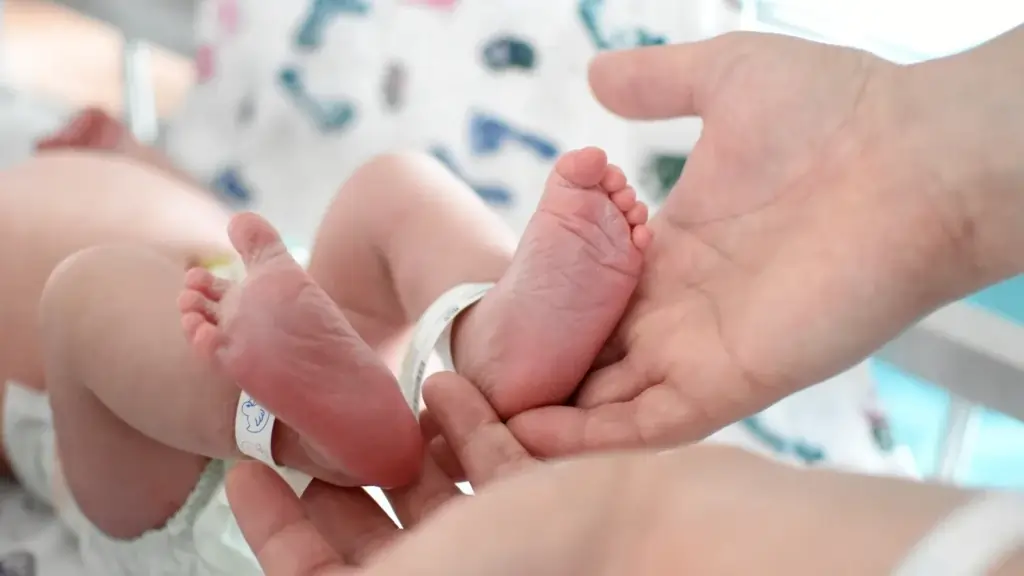New Delhi: In a groundbreaking achievement for medical science, the United Kingdom has reported the successful birth of eight healthy babies through mitochondrial donation, also known as Mitochondrial Replacement Therapy (MRT). This pioneering in vitro fertilization (IVF) technique, designed to prevent the transmission of life-threatening mitochondrial diseases, marks a significant advancement in reproductive medicine. The procedure, often referred to as the “three-parent baby” technique, involves combining genetic material from three individuals to create embryos free from mitochondrial defects. Published on July 16, 2025, in the New England Journal of Medicine, the results of this clinical trial conducted by Newcastle University and the Newcastle upon Tyne Hospitals NHS Foundation Trust offer hope to families at high risk of passing on debilitating genetic conditions.

Understanding Mitochondrial Disease
Mitochondria are tiny structures within nearly every cell in the human body, often described as the “power plants” that generate over 90% of cellular energy. These organelles contain their own DNA, known as mitochondrial DNA (mtDNA), which is distinct from the nuclear DNA that determines physical characteristics. Mitochondrial diseases arise when mtDNA contains mutations, impairing the mitochondria’s ability to produce energy. This energy deficiency can lead to cell death, causing entire organ systems—such as the brain, heart, and muscles—to fail. These conditions are exclusively inherited from the mother, affecting approximately 1 in 5,000 newborns annually. Symptoms often manifest in early childhood, leading to severe disabilities, developmental delays, or even early death, with no known cure.
Families with a history of mitochondrial disease face difficult reproductive choices, as the risk of passing on these mutations can be high. The development of mitochondrial donation offers a solution, allowing parents to have genetically related children with a significantly reduced risk of inheriting these devastating conditions.
What is Mitochondrial Donation?
Mitochondrial donation, or Mitochondrial Replacement Therapy (MRT), is an advanced IVF technique that replaces faulty mitochondrial DNA in a mother’s egg with healthy mtDNA from a donor. The resulting embryo contains nuclear DNA from the biological mother and father, which makes up over 99% of the genetic material, and a small amount of mitochondrial DNA—less than 1%—from the donor. This unique combination has led to the term “three-parent baby,” although the donor’s contribution is minimal and does not influence the child’s physical traits.
There are two primary techniques used in MRT:
- Pronuclear Transfer (PNT): This method is performed after fertilization. The mother’s egg, containing faulty mitochondria, and a donor egg with healthy mitochondria are both fertilized with the father’s sperm. The nuclear material from the mother’s fertilized egg is then transferred to the donor egg, from which the nuclear material has been removed. The resulting embryo contains the parents’ nuclear DNA and the donor’s healthy mitochondria, with less than 5% carryover of defective mitochondria.
- Maternal Spindle Transfer (MST): Conducted before fertilization, this technique involves transferring the mother’s nuclear material from her egg into a donor egg with healthy mitochondria, which has had its own nuclear material removed. The reconstructed egg is then fertilized with the father’s sperm. MST is preferred due to its lower risk of defective mitochondria carryover.
The Newcastle team utilized the pronuclear transfer technique for the clinical trial, achieving a significant milestone in reproductive medicine.
The UK’s Pioneering Role
The United Kingdom has been at the forefront of mitochondrial donation research, becoming the first country to legalize the procedure in 2015 after extensive public engagement and ethical discussions. The Human Fertilisation and Embryology Authority (HFEA) regulates MRT, ensuring strict guidelines are followed. In 2017, the Newcastle Fertility Centre was granted the first license to perform the procedure, led by researchers such as Professor Doug Turnbull and Professor Mary Herbert, who have dedicated decades to developing this technology.
Wellcome, a global charitable foundation, has played a pivotal role in this journey. For over 30 years, Wellcome has funded discovery research at Newcastle University, including the establishment of the Wellcome Centre for Mitochondrial Research. The organization also supported public engagement initiatives to address ethical concerns and worked with policymakers to shape the UK’s legal framework. Additionally, Wellcome co-funded the clinical trial that led to the birth of these eight healthy babies, demonstrating the power of combining scientific innovation with advocacy and trust-building.
The Clinical Trial and Its Outcomes
In 2023, the HFEA confirmed that between one and five babies had been born in the UK through mitochondrial donation. By July 2025, researchers announced in the New England Journal of Medicine that eight children—four boys and four girls, including one set of identical twins—had been born to seven women using the pronuclear transfer technique. One additional pregnancy is ongoing. These children, ranging from a few months to over two years old, show no signs of the mitochondrial diseases they were at risk of inheriting, offering “highly promising” early results.
The trial focused on women whose eggs contained high levels of pathogenic mitochondrial DNA mutations, making them unsuitable for other reproductive options like preimplantation genetic testing (PGT). PGT allows clinicians to select embryos with low mutation levels for IVF, but it is ineffective for women whose eggs all carry high mutation loads. In the trial, 8 out of 22 women (36%) who underwent MRT achieved pregnancy, compared to 16 out of 39 women (41%) using PGT, indicating that MRT is a viable option for high-risk cases.
While the results are encouraging, some challenges remain. Genetic tests revealed that five of the eight children had no detectable pathogenic mitochondrial DNA, but three had low levels—5%, 12%, and 16%—due to carryover during the pronuclear transfer process. Although these levels are considered too low to cause disease (experts suggest a threshold of around 80% for disease manifestation), the carryover highlights the need for ongoing refinement of the technique. The research team plans to monitor the children until age five to assess any potential health issues, with one child treated for a urinary infection, another experiencing resolved muscle jerks, and a third treated for high blood fat and a heart rhythm disturbance related to a maternal pregnancy issue.
Voices of Hope
The emotional impact of this breakthrough cannot be overstated. One mother, whose daughter was born through MRT, shared, “As parents, all we ever wanted was to give our child a healthy start in life. After years of uncertainty, this treatment gave us hope—and then it gave us our baby. We look at them now, full of life and possibility, and we’re overwhelmed with gratitude. Science gave us a chance.” These sentiments underscore the life-changing potential of MRT for families facing the devastating prospect of mitochondrial disease.
Ethical and Legal Considerations
Mitochondrial donation has sparked ethical debates, particularly around “‘three-parent babies” and the limits of genetic intervention. Critics question strategies to ensure MRT remains a targeted solution for families at high risk, offering hope where traditional IVF and PGT may not suffice. The success of the UK trial could pave the way for broader adoption of MRT worldwide, provided ethical and regulatory frameworks continue to evolve in tandem with scientific progress.
Conclusion
The birth of eight healthy babies through mitochondrial donation in the UK is a landmark achievement in medical science, offering a lifeline to families affected by mitochondrial diseases. By combining cutting-edge IVF techniques with rigorous research, ethical engagement, and regulatory oversight, the Newcastle team has demonstrated what is possible when science, policy, and lived experience converge. As the children continue to be monitored and the technique is refined, this breakthrough serves as a beacon of hope for healthier futures and a model for responsible scientific innovation.
Frequently Asked Questions
1. What is mitochondrial donation, and how does it work?
Mitochondrial donation, also known as Mitochondrial Replacement Therapy (MRT), is an advanced IVF technique designed to prevent the transmission of mitochondrial diseases from mother to child. It involves replacing faulty mitochondrial DNA (mtDNA) in a mother’s egg with healthy mtDNA from a donor. The resulting embryo contains nuclear DNA from the biological mother and father (over 99% of the genetic material) and a small amount of mitochondrial DNA (less than 1%) from the donor, earning it the term “three-parent baby.” Two main techniques are used: Pronuclear Transfer (PNT), performed after fertilization, and Maternal Spindle Transfer (MST), done before fertilization, with MST preferred for its lower risk of defective mitochondria carryover.
2. What are mitochondrial diseases, and why are they significant?
Mitochondrial diseases are rare genetic conditions caused by mutations in mitochondrial DNA, which impair the mitochondria’s ability to produce energy. These “power plants” of cells generate over 90% of cellular energy, and when defective, they can lead to cell death and organ system failure, particularly affecting the brain, heart, and muscles. Symptoms often appear in early childhood, causing severe disabilities or early death, with no known cure. These diseases are inherited exclusively from the mother, affecting about 1 in 5,000 newborns, making mitochondrial donation a critical option for at-risk families.
3. Is mitochondrial donation safe, and what are the outcomes?
The UK clinical trial, reported in July 2025 in the New England Journal of Medicine, showed that eight babies born through mitochondrial donation were healthy, with no signs of the mitochondrial diseases they were at risk of inheriting. However, three of the eight had low levels of pathogenic mtDNA (5%, 12%, and 16%) due to carryover during the procedure, though these levels are unlikely to cause disease. Long-term monitoring until age five is planned to ensure continued health, with minor issues like a treated urinary infection and resolved muscle jerks reported in some children. While promising, the technique is still being refined to minimize risks.
4. Why is the UK leading in mitochondrial donation?
The UK became the first country to legalize mitochondrial donation in 2015, following extensive public engagement and ethical discussions. The Human Fertilisation and Embryology Authority (HFEA) regulates the procedure, and the Newcastle Fertility Centre, supported by Wellcome funding, pioneered the technique. Wellcome has backed research at Newcastle University for over 30 years, established the Wellcome Centre for Mitochondrial Research, and co-funded the clinical trial. This combination of scientific innovation, policy support, and public trust has positioned the UK as a global leader in this field.
5. What are the ethical concerns surrounding mitochondrial donation?
Mitochondrial donation raises ethical questions due to its use of genetic material from three individuals, leading to debates about the term “three-parent baby” and the boundaries of genetic intervention. Critics question the long-term implications, including potential effects on future generations, while supporters argue that the benefits of preventing devastating diseases outweigh these concerns. The UK addressed these issues through public engagement and strict regulation, ensuring the procedure is used only for high-risk families. Ongoing monitoring and multi-generational data collection are recommended to assess any unforeseen impacts, fueling global discussions as other countries consider adopting the technology.

